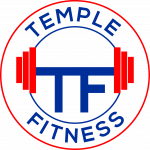How To
Shoulder Press - Plate Loaded
Instructions
The plate-loaded shoulder press machine is designed to target the deltoid muscles in the shoulders. Unlike pin-loaded machines, which use a stack of weights and a pin for selection, plate-loaded machines require the user to manually add weight plates. This design can offer a more natural and free range of motion, mimicking the feel of free weights while still providing the stability of a machine.
How to Use a Plate-Loaded Shoulder Press Machine
Setup:
- Load the desired weight plates onto the machine’s loading pins on each side. Ensure that the weight is evenly distributed on both sides.
- Adjust the seat, if the machine allows, so that the handles are at shoulder height or slightly below.
Grip:
- Sit down on the machine and grasp the handles with a pronated grip (palms facing forward). Your hands should be slightly wider than shoulder-width apart.
Starting Position:
- Sit with your back firmly against the padded support. Your feet should be flat on the ground, and your core should be engaged.
- Start with your arms bent, elbows at a 90-degree angle or slightly below.
Pressing Phase:
- Exhale as you press the handles upward, extending your arms fully. Ensure you’re using your shoulder muscles to drive the movement.
Returning Phase:
- Inhale as you slowly lower the handles back to the starting position in a controlled manner.
Repeat:
- Perform the desired number of repetitions.

Muscles Used
Primary Muscle:
- Deltoids: The main shoulder muscles, consisting of the anterior (front), medial (middle), and posterior (rear) heads.
Secondary Muscles:
- Triceps: Engaged during the pressing motion.
- Trapezius and Serratus Anterior: Stabilise and assist in the pressing motion.
Benefits of the Plate-Loaded Shoulder Press
- Targeted Shoulder Development: The machine is designed specifically for the shoulder press, ensuring optimal activation of the deltoid muscles.
- Stability: The machine provides stability, which can be beneficial for beginners or those looking to lift heavier weights without a spotter.
- Natural Movement: The plate-loaded design can offer a more natural range of motion compared to some pin-loaded machines.
- Versatility: The machine allows for progressive overload by easily adding weight plates as strength increases.
Common Mistakes:
- Using Excessive Weight: Using too much weight can compromise form and lead to potential injuries.
- Incomplete Range of Motion: Ensure you fully extend your arms at the top and return to a 90-degree angle (or slightly below) at the bottom.
- Flaring the Elbows: Keep your elbows slightly tucked in, rather than flaring them out to the sides.
- Arching the Back: Keep your back firmly against the pad and avoid arching your spine during the press.
The plate-loaded shoulder press machine is an effective tool for building strength and muscle in the shoulders. As with all exercises, proper form and technique are crucial for safety and maximising benefits.
